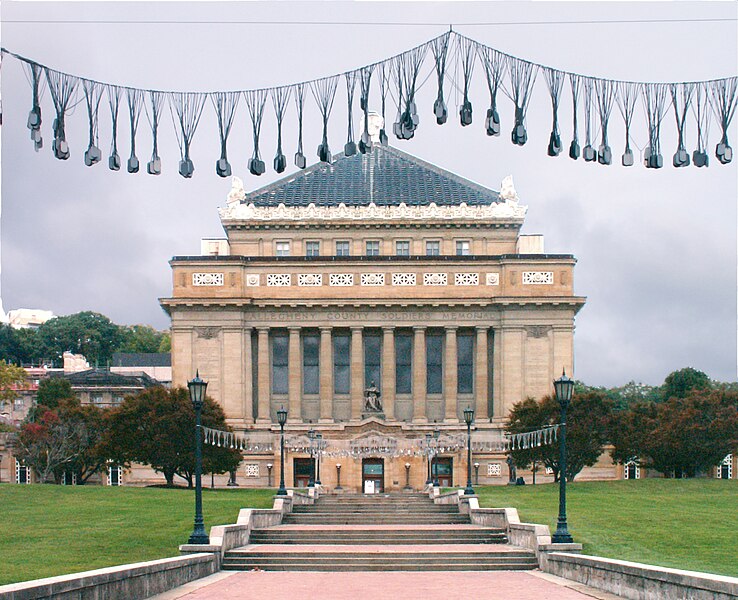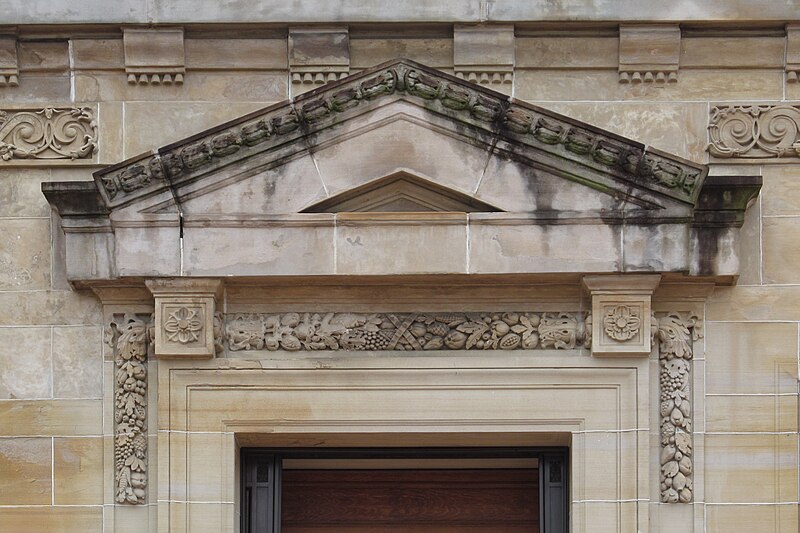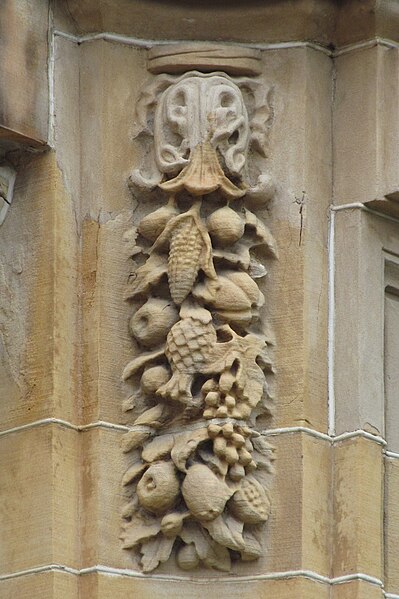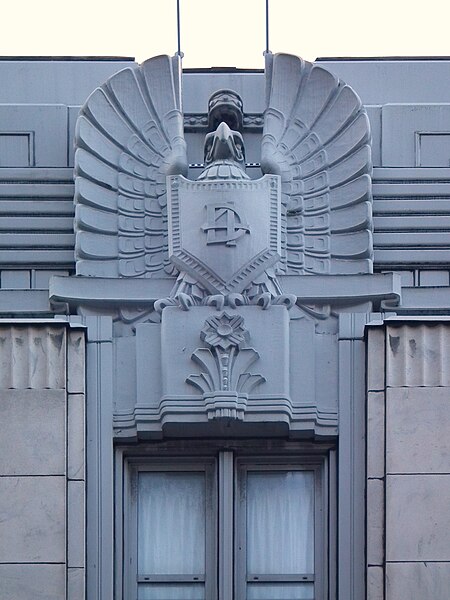
This building, put up in 1930–1931, was a branch of the Federal Reserve Bank of Cleveland, and the Clevelanders Walker & Weeks were the architects—but with Henry Hornbostel and Eric Fisher Wood as “consulting architects.”1 Old Pa Pitt doesn’t know exactly how far the consulting went. At any rate, the architects chose sculptor Henry Hering, who had done several prominent decorations in Cleveland, to create the cast-aluminum reliefs for this building. The picture below is from 2015, but it will serve to show the placement of the reliefs:

The three main figures are obviously allegorical; they seem to represent industry, agriculture, and the professions.
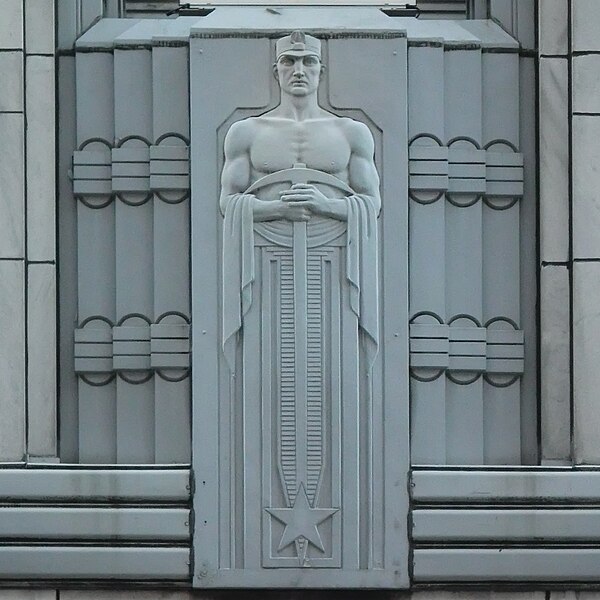
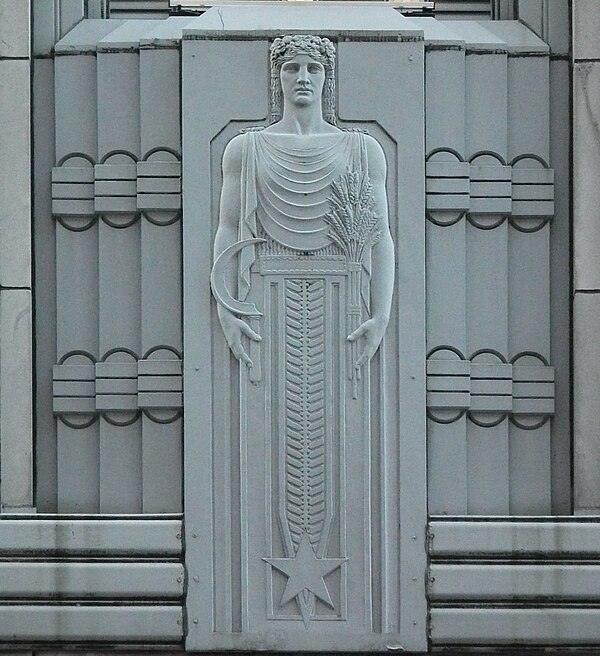
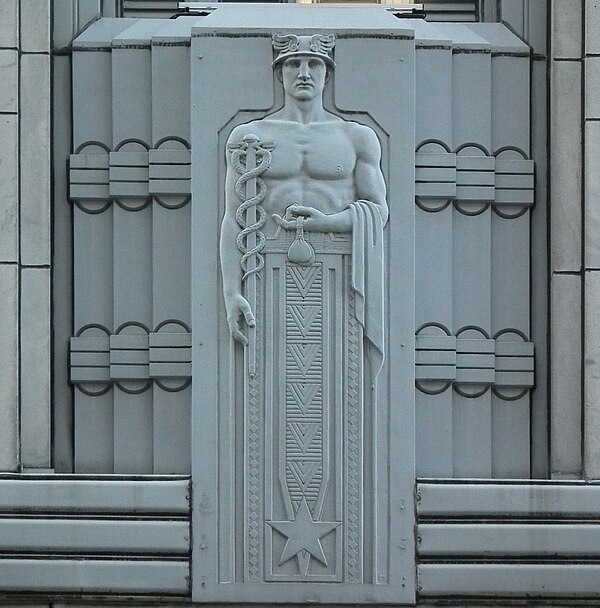
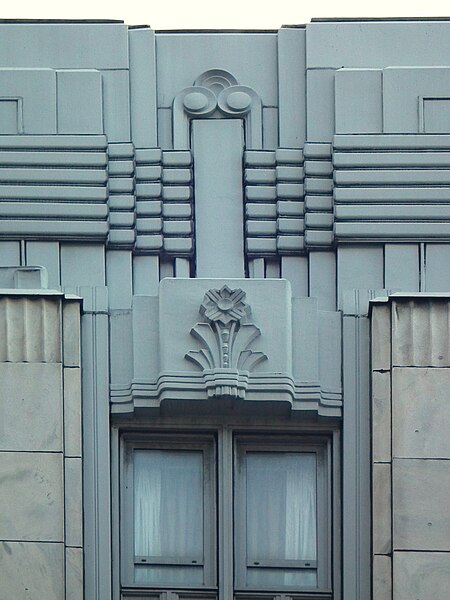
- Source: Walter Kidney, Henry Hornbostel: An Architect’s Master Touch, where this building is no. 137 in the List of Works. ↩︎








